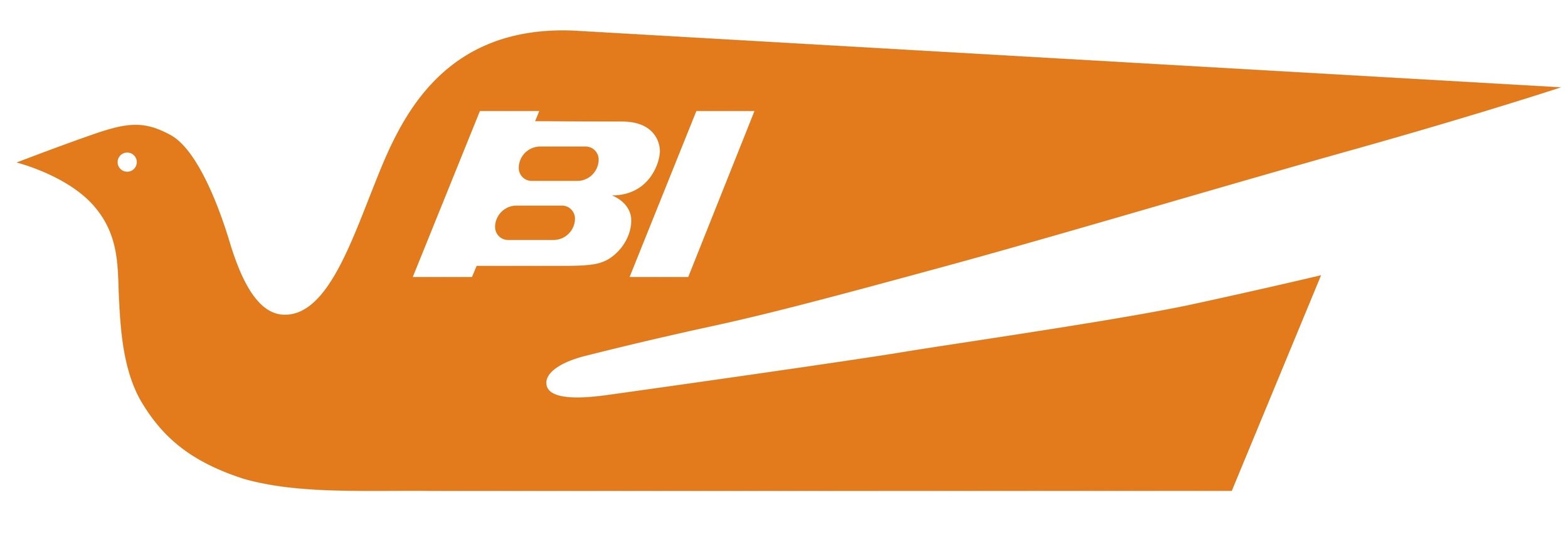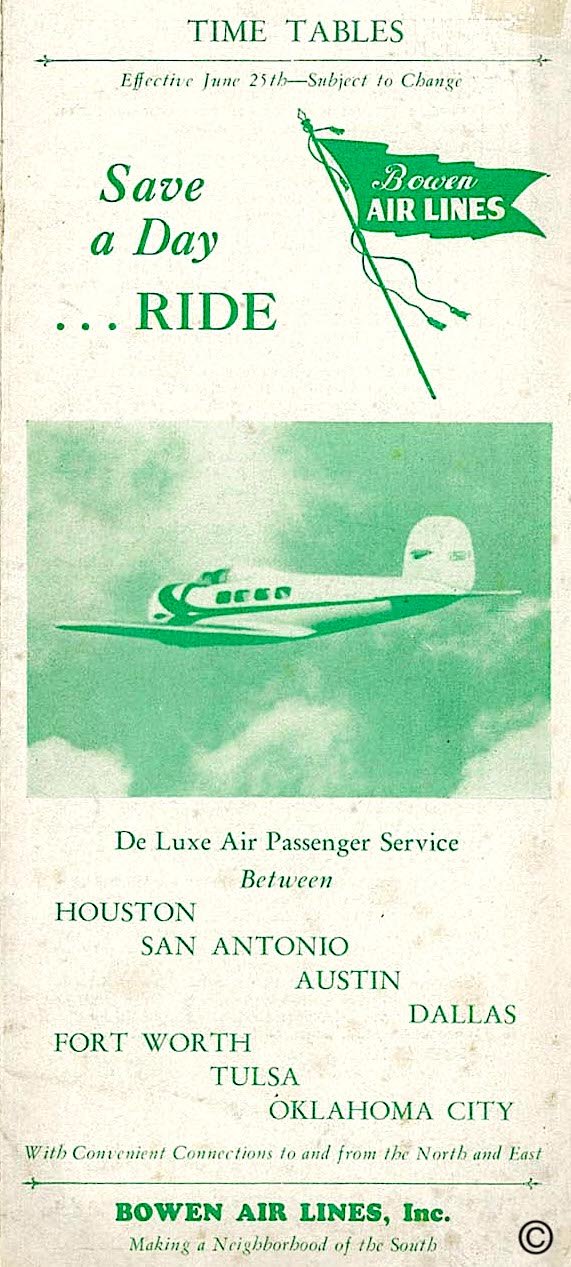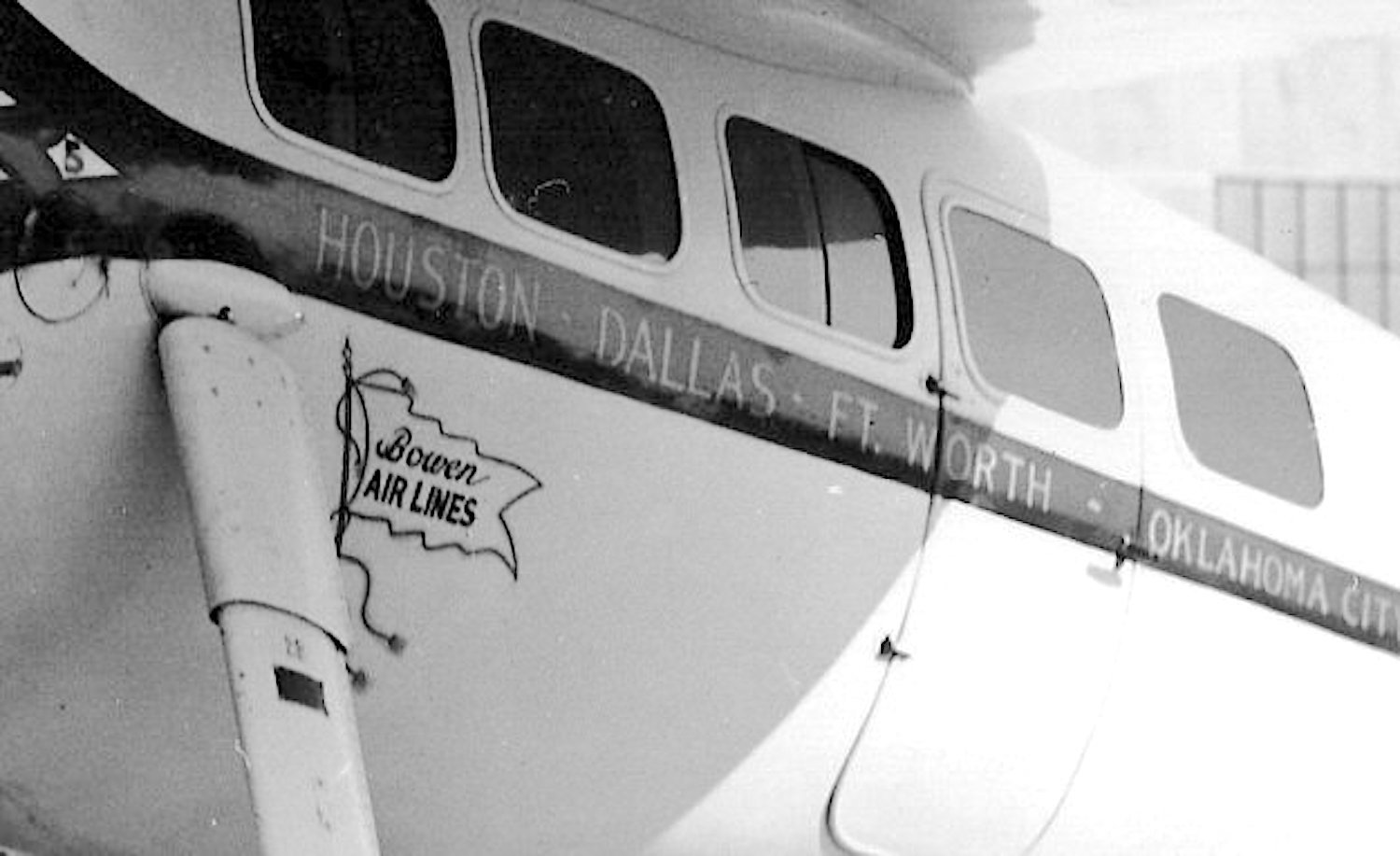Bowen Airlines Timeline
BOWEN AIRLINES, INC.
TIMELINE
1930 to 1936
1930 to 1936
September 27, 1930
Bowen Air Lines, Inc., is formed in the State of Texas as a Domestic For-Profit Corporation by Mr. Temple Gaylen Bowen. The company’s General Offices are located at Ft. Worth, Texas.
Prior to his founding of Bowen Air Lines, Mr. Bowen founded and owned, with his brother R. L. Bowen, Merchants Fast Motor Lines, a trucking firm, and later West Texas Bus Lines, which was the Southwest’s first passenger bus company.
Temple Bowen was one of the founders of Texas Air Transport, which was one of the predecessors of American Airlines, Inc. Mr. Bowen bid for Air Mail contracts from Dallas and Ft. Worth and Houston and Galveston and Dallas and Ft. Worth to Austin and San Antonio.
The company won the CAM 21 and CAM 22 and began operating the new routes with five Pitcairns and two Stearmans on February 6, 1928. The company made profits during its first nine months of operation and Mr. Bowen sells it to South Air Transport on November 1, 1928.
Photo: Mr. Temple G. Bowen, second from right holding hat, along with Bowen Pilot Bill Ponder far right holding hat and two Lockheed representatives pose in front of of Bowne’s first new Lockheed 9 Orion single-engine high-speed airliner in 1931. Mr. Bowen is accepting the new aircraft from Lockheed
October 1, 1930
The company inaugurates its first air service using Lockheed Vega six-passenger single-engine airliners flying between Ft. Worth, Dallas and Houston, all in Texas
The company adopts the slogan, “Making a Neighborhood of the South.”
October 25, 1930
Service is inaugurated between Dallas Love Field and Oklahoma City, Oklahoma.
Photo: The five-passenger Lockheed Vega 5B was the mainstay of the Bowen fleet, Ship NC161W is posing with professional fighter Jack Dempsey at Ft. Worth Meacham Airport on January 8, 1931
November 25, 1930
New service begins at Tulsa, Oklahoma, with flights to Dallas and Ft. Worth
March 31, 1931
Bowen Air Lines emphasized the speed and frequency of its service to entice passengers to fly with the company. When the Airline began in October 1930 it was flying 500 miles each day and today is flying 4500 miles every day. The Airline employs 40 employees, which includes 12 pilots
May 1, 1931
Bowen Air Lines takes delivery of the new high-speed Lockheed Model 9 Orion single-engine airliner, which was built to specifications that Mr. Temple Bowen had designed and given to Lockheed to build for him. Bowen became the first airline to operate the new Orion, which also featured retractable landing gear for high speed flight.
The Orion could fly at a cruising speed of 180 miles-per-hour with a maximum speed of 225 mph. A very unique addition was the installation of wing flaps to assist with slowing the aircraft down for landing. This became the first use of flaps on an airliner.
Photo: Bowen boasts a perfect safety record even though this brand new Bowen Lockheed Orion 9 airliner was involved in a gear up landing at Ft. Worth Meacham Airport in July 1931. The pilot, Perry F. “Pop” Hotchkiss was not harmed. The aircraft was repaired and then sold
May 17, 1931
Bowen begins the first service with its new six-passenger Lockheed Model 9 Orion airliner over a new route flying from Dallas to Austin and San Antonio
August 31, 1931
More than 10,000 passengers are carried by Bowen Airlines during the first seven months of 1931
September 1, 1934
Bowen expands its operations to include a route that operates from Chicago to Dallas and as far south as San Antonio and Houston, Texas, with stops in both Missouri and Oklahoma
The company is not awarded one of the coveted Air Mail routes that had saved many smaller airlines, including Braniff Airways, Incorporated. As a result, the company, totally reliant on sporadic passenger revenue, begins to experience severe economic problems that were exacerbated by a general economic downturn in the United States
1935
Bowen Air Lines introduces two Vultee V-1A airliners to its route system with a big 8 passenger carrying capacity. This new metal airliner was the fastest at the time with a cruising speed of 205 miles-per-hour and a maximum speed of 235 mph
January 1, 1936
Facing insurmountable losses, Temple Bowen, files for bankruptcy and Bowen Airlines, Inc., ceases operations. The company is not resurrected.
Rumors have persisted that Braniff Airways purchased the assets of Bowen. However, company records from that period do not indicate that Braniff purchased these assets although the intellectual property assets are owned by the private Texas Trust that currently owns Braniff Airways. A review of newspapers from the time that Bowen filed for bankruptcy confirms that the company filed for bankruptcy but there was never a mention of Braniff purchasing the assets of the company. An internal company memo from the early 1960s generated by Braniff Publications Manager Martha Leonard “Pat” Zahrt clearly stated that Braniff did not purchase Bowen but that “certain assets” were purchased.
Braniff, operating over a similar route from Chicago to Houston, the company keeps Bowen’s slogan, “From the Great Lakes to the Gulf.” The fact that Braniff began using this slogan and that private Texas Trust owns Bowen’s intellectual property indicates that Braniff most likely purchased Bowen’s intellectual property to prevent another carrier or even Bowen resurrecting the company under that name
July 28, 1943
Temple G. Bowen’s brother R. C. Bowen, similar to Paul Revere Braniff, wasn’t to be defeated by the airline industry. He reveals his plans for a massive new airline in the Ft. Worth Star Telegram Newspaper. The new airline would link 101 cities in the United States. Now Bowen Airways, the company is filing for CAB approval to move forward with the plan. However, the plan never comes to fruition
March 7, 1950
Bowen’s company legal status is forfeited and becomes inactive
















